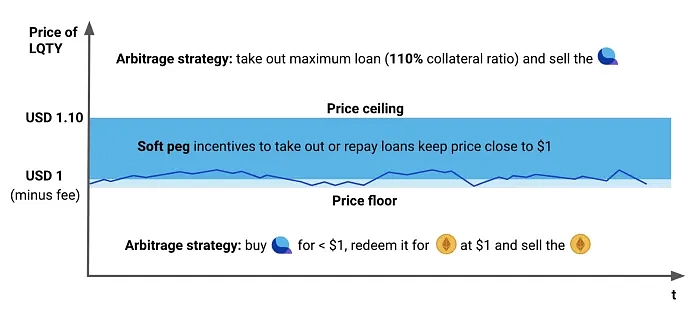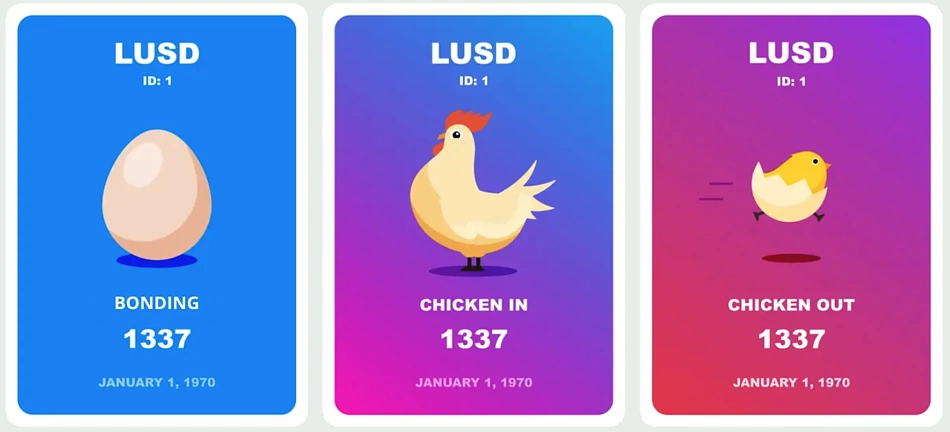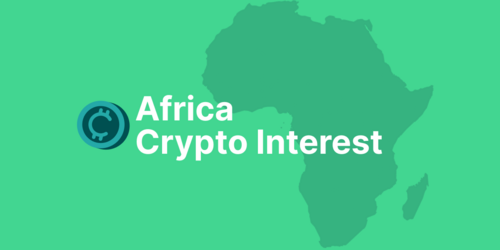What Is the Liquity Protocol?
Liquity Protocol is a decentralized finance platform that allows users to borrow against their ETH holdings to generate a dollar-pegged stablecoin, LUSD. This stablecoin can then be utilized within the DeFi ecosystem or even can be used to cover everyday expenses.
Key Takeaways
-
Liquity allows borrowing against ETH with zero percent interest rates*, using its algorithmic stablecoin LUSD.
-
LUSD maintains its dollar peg through over-collateralization of loans and a redemption mechanism where LUSD can be redeemed for ETH.
-
Chicken bonds were introduced to boost liquidity and sustainable yield. Users can deposit LUSD in exchange for bLUSD tokens that accrue over time, with flexibility to withdraw or convert their holdings – known as "chickening out".

Liquity: A Permissionless and Governance-Free Protocol
Designed to be unstoppable, Liquity is just like Ethereum, meaning that once deployed, it operates without the possibility of interference or downtime. This emphasis on immutability makes it one of the most cyberpunk decentralized financial services to date, and has proved it by issuing billions of dollars since its inception to borrowers worldwide.
Another unique aspect of Liquity is that it operates without governance. This means no votes, no changes and no politics whatsoever. The Liquity token (LQTY) is thus not a governance token but rather a means for contributors to accrue fees from the protocol.
Borrowing LUSD on Liquity Protocol
LUSD, also called the 'unstoppable stablecoin' by Liquity, is the decentralized algorithmic stablecoin that is created when users open collateralized debt positions, also known as ‘troves’, to borrow LUSD against ETH collateral.
It can be used for a variety of purposes, such as buying real world assets, daily expenses, or for reinvesting in the cryptocurrency market.
"He told me about liquity and its mechanism where you could borrow against your ETH and there was no interest rate and I was highly skeptical of that at first. It sounded a little too good to be true, but I looked into it and... understood how it worked and it just seemed kind of magical."
- Eric Voorhees, CEO of ShapeShift
Borrowing on Liquity is straightforward, but the mechanisms behind the scenes are more complex. Let's take a look.
‘Interest Free Borrowing’
One of the platform's main draws is the ability to borrow its own stablecoin, LUSD, at zero percent interest – an unprecedented feature in DeFi where most of the lending platforms charge some form of interest.
This zero percent interest borrowing is achieved by implementing a fee structure that doesn't rely on continuous interest payments, which is good news for users looking to minimize borrowing costs.
This could be very interesting for the potential use case of Liquity loans in some parts of the world, where interest on loans are avoided due to strong religious beliefs – perhaps this could be a game changer for people from these regions.
So borrowing on Liquity is completely free? No, sadly it isn’t completely free; we can say that it's zero interest but not zero cost as there is a loan origination fee that needs to be paid. This fee is calculated as 0.5% + a variable base rate.
The variable base rate acts as a governor on the money supply. Starting at zero, it increases with redemptions and decays back to zero if there are no redemptions over time.
An example
-
Gordon the Gecko opens a new collateralized debt position (a.k.a. a trove) each month, financing his taste for high-end terrarium decor. This strategy comes at a cost, with a higher variable base rate increasing his expenses.
-
Lizzy the Gecko, with foresight, opens a single trove and perches patiently in her arboreal retreat. After five years, her consistent strategy yields a low APR, reflecting the value of her long-term commitment.
Liquidation Reserve
Additionally, a liquidation reserve of 200 LUSD is required, which is returned upon closing your position, ensuring that in the case of a liquidation event, the liquidators are compensated for gas costs, which could be substantial in volatile times.
Liquity Liquidation: Collateralization Ratios
Individual Collateral Rate
When depositing ETH to borrow LUSD, users must maintain a minimum collateralization ratio, starting at 110%. This means that with $110 worth of ETH deposited, users can withdraw $100 in stablecoins.
This lower collateralization threshold provides greater capital efficiency but also increases the risk of liquidation, although users don’t have to use this low collateralization level.
Total Collateral Ratio and Recovery Mode
The overall health of the Liquity ecosystem is reflected by the total collateral ratio. A critical point to note is that if the total collateral ratio falls below 150%, the minimum collateralization ratio for individual loans will automatically adjust from 110% to 150%. This is known as Liquity going into ‘recovery mode’.
Therefore, users must check their ratios at all times and have enough funds ready to pay back parts of their loan, or do not take out loans that have lower than 150% collateralization ratios to avoid liquidation.
Stability Pool
The Stability Pool is another crucial component. It acts as a reserve of LUSD, ready for instant liquidation of under-collateralized troves. Depositors, who deposit LUSD to this pool not only aid in maintaining the system's health but are also rewarded with a share of liquidated collateral, making it an attractive proposition for liquidity providers.
In normal times, the liquidity providers collect small premiums from the liquidation of troves who can't meet their collateral minimums. But this could change if the system goes into 'recovery mode'.
LUSD Pegging Mechanism
We know that LUSD is created when users open collateralized debt positions, also known as ‘troves’, to borrow LUSD against ETH collateral. It is then burned when borrowers close the troves and repay the LUSD. But what keeps LUSD pegged to the dollar?
LUSD < $1
This mechanism we just described ensures that the value of collateral in troves is always greater than the value of LUSD borrowed by the trove owners. But this alone does not directly help LUSD maintain its peg.
Holders of LUSD have the option to redeem LUSD at any time for $1 worth of ETH, minus a redemption fee that consists of a fixed 0.5% plus a variable base rate. This ensures a price floor for LUSD, so if the price of LUSD falls below $1, users can redeem it for ETH with only a minimal fee.
Arbitrageurs can profit by buying it cheaply and redeeming it for $1 worth of ETH, thus pushing the price back towards the peg.
LUSD > $1
If the price of LUSD ever rises above $1.10, it creates a borrowing incentive. In this case, one can take out a loan committing only the minimum 110% collateral ratio of ETH. This would allow borrowing more in LUSD than the value of ETH committed as collateral.
The increased borrowing that results from this opportunity mints additional LUSD, inflating the stablecoin's supply. This acts to pull the price of LUSD back down towards its $1 peg.

Chicken Bonds
The Chicken Bonds project, developed by the team at Liquity, is a novel financial instrument, specifically applied to their stablecoin, LUSD. Chicken Bonds offer an amplified yield-earning and trading opportunity for LUSD holders while helping to stabilize the price of LUSD and improve its liquidity.
The project garnered attention for its humorous name, but it is a serious effort to address liquidity and capital efficiency challenges faced by many DeFi protocols.
These bonds are unique in that they do not have a set maturity date and allow bonders to accumulate yield over time.
Users may deposit LUSD in exchange for an accruing balance of bLUSD. At any time, bond-holders can either:
-
Chicken-Out: Recover the LUSD and forego the accrued bLUSD
-
Chicken-In: Trade the bonded LUSD for the accrued bLUSD.

The protocol's mechanism, based on the concept of "bonding," was inspired by OlympusDAO, a highly regarded project that played a significant role in the 2021 DeFi 2.0 movement.
Also, the yield generated by Chicken Bonds primarily comes from their role in supporting the stability pool of Liquity Protocol. When someone decides to "chicken-in," a portion of the LUSD is directed towards LP rewards in the Curve Finance pool, creating a sustainable yield source.
While Chicken Bonds add an extra incentive, they aren't the only solution that serves the purpose of stabilizing LUSD. However, Chicken Bonds complement this system by adding another layer of financial incentive and liquidity provision.
Chicken Bond NFTs
The Chicken Bonds NFT collection is exclusively tied to Liquity and the only way to mint one is to create a bond. Their rarity will depend on the size of the bond and the user's involvement in the Liquity ecosystem.
These on-chain generative NFTs change their visual representation based on the users actions. The NFT visual will either;
-
An egg (while bonding)
-
A Chicken (after claiming the bond – “Chickening In”)
-
Chicken on the run (after canceling the bond – “Chicken Out”).
The most dedicated Chicken Bonders (and thus engaged) users in the Liquity ecosystem will get the rarest NFT.
bLUSD
A user who bonds LUSD will get a new token, bLUSD (Bonded LUSD), which is a yield-bearing token. How much you are going to get will depend on variables like time, bonded amount, chicken-in fees, accrual parameter (alpha), and redemption price of bLUSD.
Take note that the amount of LUSD bonded is considered after accounting for the 3% chicken-in fees from the actual bond value for the calculation of bLUSD accrual.
bLUSD is a token with the following properties:
-
It offers higher yield compared to depositing LUSD in the Stability Pool
-
The yield produced is automatically harvested and compounded
-
It’s an ERC-20 token that can be used as collateral.
What Backs bLUSD?
For each bLUSD, there is a specific amount of LUSD backing it. Similarly, every LUSD is backed by a certain amount of ETH, ensuring that the principal of LUSD is always protected.
bLUSD Pegging Mechanism
If the price of bLUSD falls below its floor price, it becomes more advantageous to purchase it directly rather than bond it. Conversely, if its price rises significantly, there is an incentive to "chicken-in" faster, which can increase the supply and potentially lower the price of bLUSD.
LQTY
At last, there is the LQTY, which isn’t a governance token because Liquity is not a DAO. It’s rather a way to benefit from the protocol’s growth and success. You can stake LQTY and thereby bet on the adoption of Liquity protocol.
Staking LQTY grants you a share of all borrowing and redemption fees proportional to your stake (pro rata). More loans and redemptions translate to more fees, and thus, more value for LQTY holders. There is no lock-up period for staking LQTY, offering liquidity and flexibility to token holders.
How to Access Liquity Protocol
Liquity does not offer its own frontend, which makes the protocol more censorship resistant and lets them outsource the risk and burden of KYC/AML. If you want to access Liquity, you need to select a front-end from several third-party frontend operators.
Operators may offer different kickback rates, or the percentage of LQTY rewards they take. Meaning the percentage of borrowing fees that front-end operators can choose to return to users as an incentive.
When choosing a frontend operator the kickback rate is a critical factor, as it determines the portion of rewards operators will claim. High kickback rates, such as 100%, mean that all rewards go directly to the user.
Going back to the LUSD redemption process, it's important to note that it can only occur through 3 of the 18 available front-ends: Front-end 1, Front-end 2, Front-end 3.

Conclusion
Liquity Protocol is setting a new standard for capital efficiency and unstoppable DeFi. It has shown remarkable resilience in maintaining its peg; LUSD tends to frequently overpeg but it has never depegged and has a robust system that includes redemption, stability pools, liquidation, and redistribution mechanisms. All done without critical phases or controversy, as seen in the case of some other stablecoins.
Understanding the intricacies of Liquity Protocol can be challenging, but its success indicates that complexity in design can lead to simplicity in function. Users who take the time to understand and engage with the platform may find it a valuable addition to their DeFi portfolio. This article is only provided for educational purposes, and readers should do their own research and ensure they understand how a protocol operates and the related risks before investing any capital in projects.

Hans entered the space in 2017 for the quick gains but ended up staying poor. Since 2020, he has contributed to many crypto projects and has written several blog posts in English and Dutch. By sharing his research and findings, he hopes that everyone reading can make better informed decisions.









 Or check it out in the app stores
Or check it out in the app stores